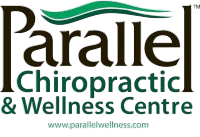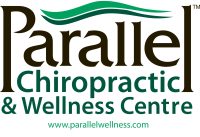What is Arthritis?
What is arthritis?
In Latin, “arthro-“ means “joint” and “–it is” means “inflammation,” so together arthritis means inflammation of a joint. Two common types of arthritis are osteoarthritis and rheumatoid arthritis.
Osteoarthritis (OA): Often referred to as degenerative joint disease, OA is primarily due to the wear and tear of cartilage, leading to pain, swelling, and decreased joint mobility.
Rheumatoid Arthritis (RA): An autoimmune disorder where the body’s immune system attacks its own tissues, leading to joint inflammation and damage.
Chiropractors can provide drug-free, non-invasive treatments to manage arthritis. Here’s how:
Arthritis in middle-aged individuals
For middle-aged individuals, the early stages of arthritis often present as occasional joint pain and stiffness. At this stage, chiropractors can help by:
- Assessing and Diagnosing Early:
- Chiropractors conduct comprehensive history and physical assessments to detect early signs of arthritis.
- Imaging and other diagnostic tools may be used to better understand the extent of joint involvement.
- Creating Customized Treatment Plans that may include:
- Joint Manipulation: Gentle manipulations (commonly referred to as “adjustments”) to improve joint mobility and reduce pressure on affected areas, enhancing functionality and reducing pain.
- Soft Tissue Therapy: Techniques such as massage and myofascial release to alleviate muscle tension and improve blood flow to the affected joints and surrounding musculature.
- Physical Rehabilitation: Forms of exercise therapy that may involve resistance training, mobility work, and/or stretching to improve joint health and the functional capacity of your supporting muscles
- Lifestyle and Ergonomic Advice: Guidance on ergonomic modifications at work and home to minimize joint strain.
- Discussing Preventive Measures:
- Encouraging regular, low-impact exercise to maintain joint health.
Advising on weight management to reduce stress on weight-bearing joints.
Arthritis in older adults
For older adults, arthritis symptoms can be more pronounced. Chiropractic care can significantly improve quality of life by:
- Education
- Pain Management:
- Joint manipulation to help manage chronic pain, improve posture, and enhance mobility.
- Consider use of modalities such as transcutaneous electrical nerve stimulation (TENS), and heat/cold applications to reduce pain and inflammation.
- Enhancing Mobility and Function:
- Developing exercise programs tailored to improve joint flexibility and strength without exacerbating symptoms.
- Balance and coordination exercises to reduce the risk of falls and related injuries.
- Holistic Approach:
- Nutritional counseling to support joint health, focusing on anti-inflammatory diets rich in omega-3 fatty acids, vitamins, and minerals.
- Stress management techniques, including mindfulness and relaxation exercises, to reduce overall body tension and improve mental well-being.
- Integrative/Inter-professional Care: Chiropractors often work alongside other healthcare professionals to provide comprehensive care for arthritis patients.[2] This might include:
- Rheumatologist: Ensuring that patients receive appropriate pharmacological treatments alongside chiropractic care.
- Occupational therapist: Arthritis Canada explains, “An occupational therapist trained in arthritis management can analyze everything you do in a day and develop a program to help you protect your joints and minimize fatigue.”
- Dietician: To advise on dietary plans that support joint health and help patients reach their health goals, such as keeping your weight up or down, or understanding how medications interact with the foods you eat.
Chiropractors are uniquely positioned to offer comprehensive, non-invasive support to arthritis patients through all stages in life. With personalized care plans, preventive strategies, and an integrative approach, chiropractors can help manage symptoms, improve quality of life, and promote long-term joint health. By addressing both the physical and lifestyle aspects of arthritis, chiropractic care can be an effective component in the holistic management of this common and challenging condition.


